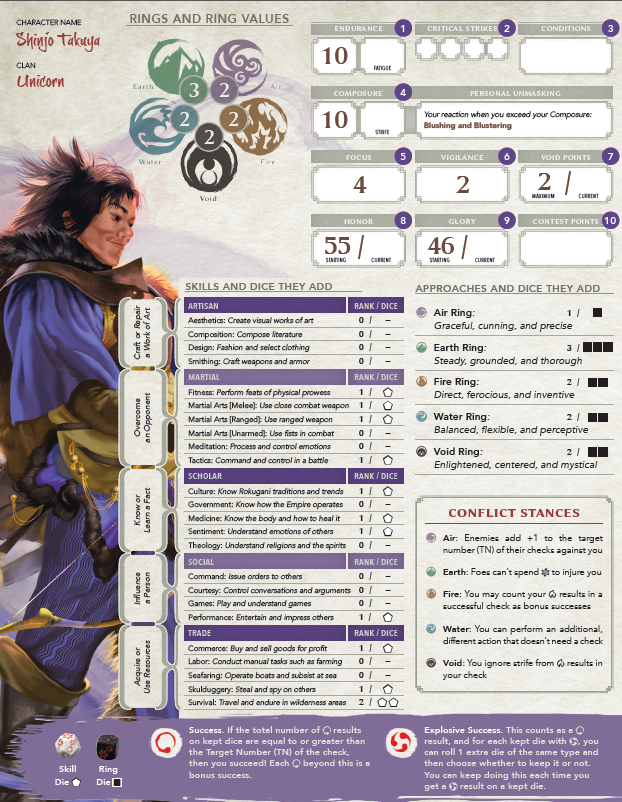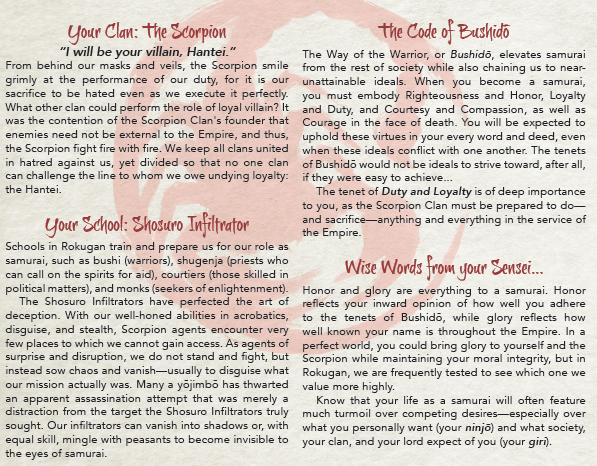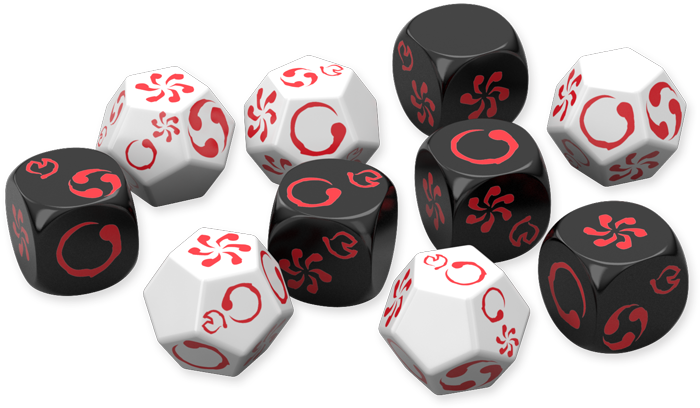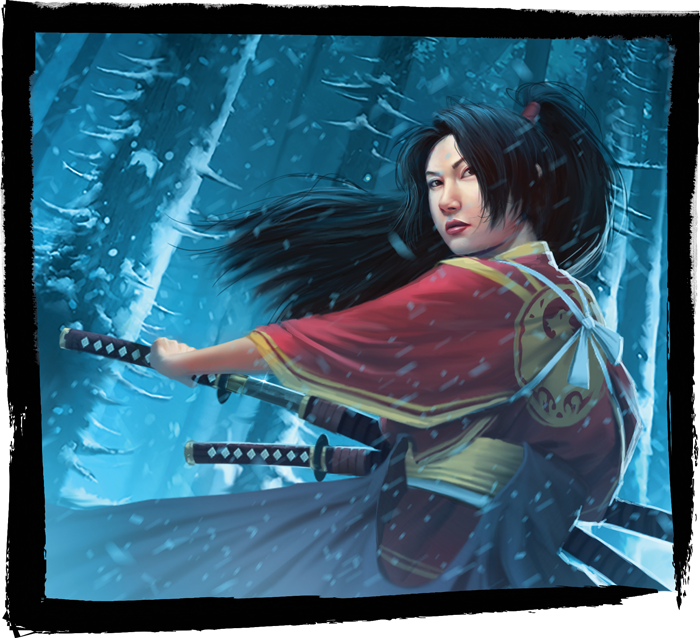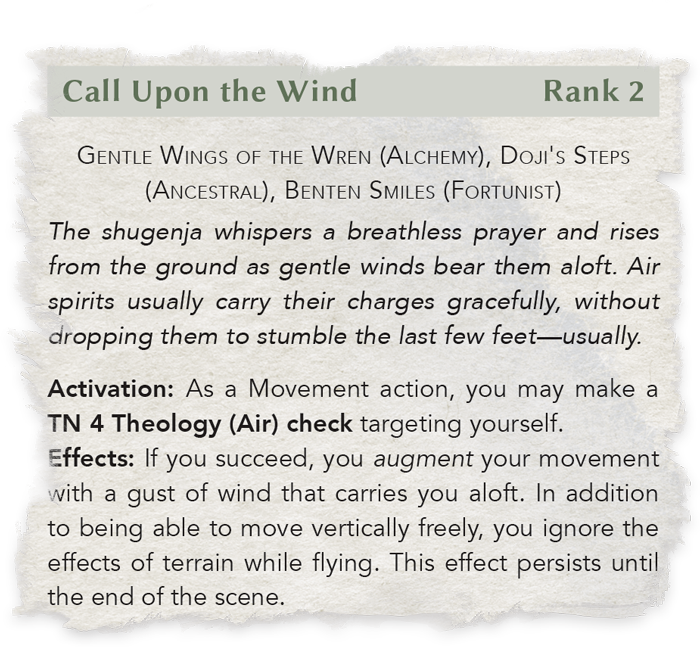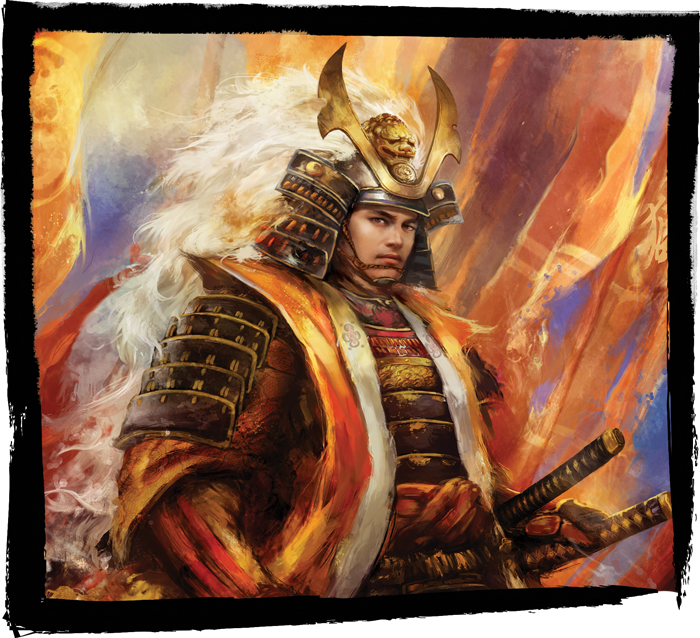Cover Stories: The Aesthetic of Game Play in Legend of the Five Rings RPG
One thousand years of tradition had led to this moment. They had trained their whole lives for this moment, guided by generations of instruction passed down from the children of the sun which shone overhead. Each stood ready, clearing from their minds any hesitation, any doubt in the perfection of their training. The dojo was the place for doubt. This was not the dojo. In this moment, this perfect precise moment, there was no room left for doubt. As all rivers must flow to the sea, so to must all lives lead to one single moment which stretches on forever, engulfed by the enormity of the world. Each lifted their brush, and began to write.
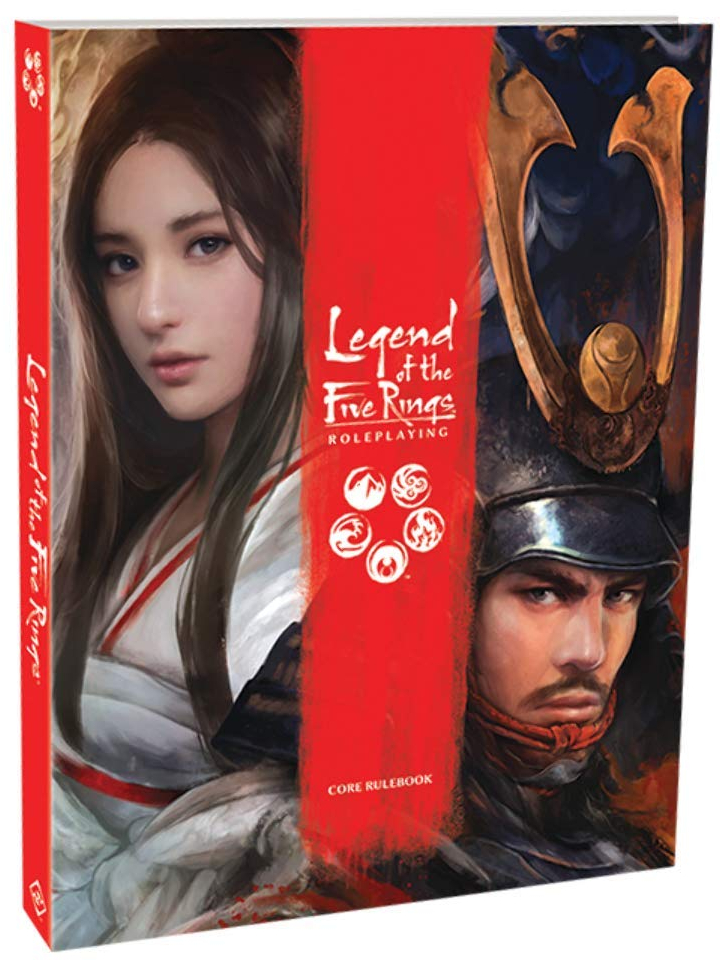 Above all else, let it be said that the Legend of the Five Rings Roleplaying Game by Fantasy Flight Games is beautiful. By that, I do not mean solely that it is pretty, though the artwork within its pages are lush and vibrant, evocative, and filled with characters and vignettes which transport you into a distant, exotic, and dangerous world. The text flows steadily, never hurrying or rushing about, covering each topic in its own time but never taking more than is necessary. Even the very typeface and font used by FFG in its Core Rules evokes the feel of the world of Rokugan, flowing together with every other aspect to create a complete vision of world filled in even amounts with magic and samurai, tradition and expression, triumph and tragedy. The latest version of the L5R RPG is more than simply pretty. It is beautiful in that it concerns itself, most directly, with beauty, and the core of beauty: passion.
Above all else, let it be said that the Legend of the Five Rings Roleplaying Game by Fantasy Flight Games is beautiful. By that, I do not mean solely that it is pretty, though the artwork within its pages are lush and vibrant, evocative, and filled with characters and vignettes which transport you into a distant, exotic, and dangerous world. The text flows steadily, never hurrying or rushing about, covering each topic in its own time but never taking more than is necessary. Even the very typeface and font used by FFG in its Core Rules evokes the feel of the world of Rokugan, flowing together with every other aspect to create a complete vision of world filled in even amounts with magic and samurai, tradition and expression, triumph and tragedy. The latest version of the L5R RPG is more than simply pretty. It is beautiful in that it concerns itself, most directly, with beauty, and the core of beauty: passion.
FFG’s Legend of the Five Rings RPG is the latest edition of the roleplaying game set in the world of Rokugan, home of the successful Legend of the Five Rings CCG and LCG. The original RPG was written by John Wick and published by Alderac Entertainment Group in 1997, and saw four editions in total as part of the setting’s run under AEG. After the sale of the IP and brand to Fantasy Flight Games in 2015, the L5R RPG went into hiatus, with the old RPG falling out of print and quickly becoming hard to find in stores. The availability of the PDFs online through DriveThruRPG kept the game alive and active in the L5R community during this hiatus, shown best with the continued success of the Heroes of Rokugan living campaign and the fan-run online Winter Court 5. With the release of the new L5R Living Card Game at Gen Con 2017, the new version of the RPG quickly became one of the most anticipated games of 2018.
Solid Early Steps
In March 2018, Fantasy Flight released a free online Beta for the RPG. It was far from a finished product and was met with solidly mixed reviews in the greater L5R community. While the team behind the RPG interacted in a somewhat limited fashion with the community during this time, there were several elements of the game which were not seemingly open for debate. In many ways, Fantasy Flight Games used its Beta run to express its vision of how an L5R RPG should be and wished to set the expectations of the community accordingly. While overall a success, the Beta had some very serious issues, which you can read more on here.
At Gen Con 2018, a Beginner’s Set for the new RPG was finally released, and it is a simply gorgeous product. It contains lovingly rendered maps, reminiscent of the oldest of the L5R RPG modules, conjuring up memories of intricately detailed castles and robust cities. The map of Tsuma Village in the Beginner’s Set places the game firmly as an inheritor of the legacy created during the early days of the L5R brand, all but skipping over the intervening years between the First Edition of the RPG and its 2018 release.
The simplified rules of the Beginner’s Set launch players into the action of the Topaz Championship, an iconic tournament which has served as an introduction module in every edition of the game, for good reason. The Topaz Championship introduces the world of Rokugan to the players through their characters leaving their homes for the first time and competing in the Empire’s most prestigious coming of age ceremonies. Each pre-generated character comes with their own personal folio, complete with bespoke artwork, personalized backstories, plot hooks, and streamlined advancement rules. Everything about the Beginner’s Set feels handcrafted to connect players to the heart of the new game: the characters they play.
Rokugan’s Evolution
The Core Rules take the game a step farther in that direction. The complete, expanded rules of the L5R RPG cleave close to the rules presented in the Beta, though several changes were made for the better. Designed and developed by Max Brooke and Katrina Ostrander, this new rendition of t the RPG is 336 pages of intricate and excellent layout and artistic design, flowing together to create a concrete thematic image.
The first twenty pages of the text stands out from the rest in its typeface and full color art, presenting a complete primer for the setting of Rokugan which is as invaluable to new players as returning ones. It also addresses a long-needed evolution of the game’s central ethos, and for that bears special recognition.
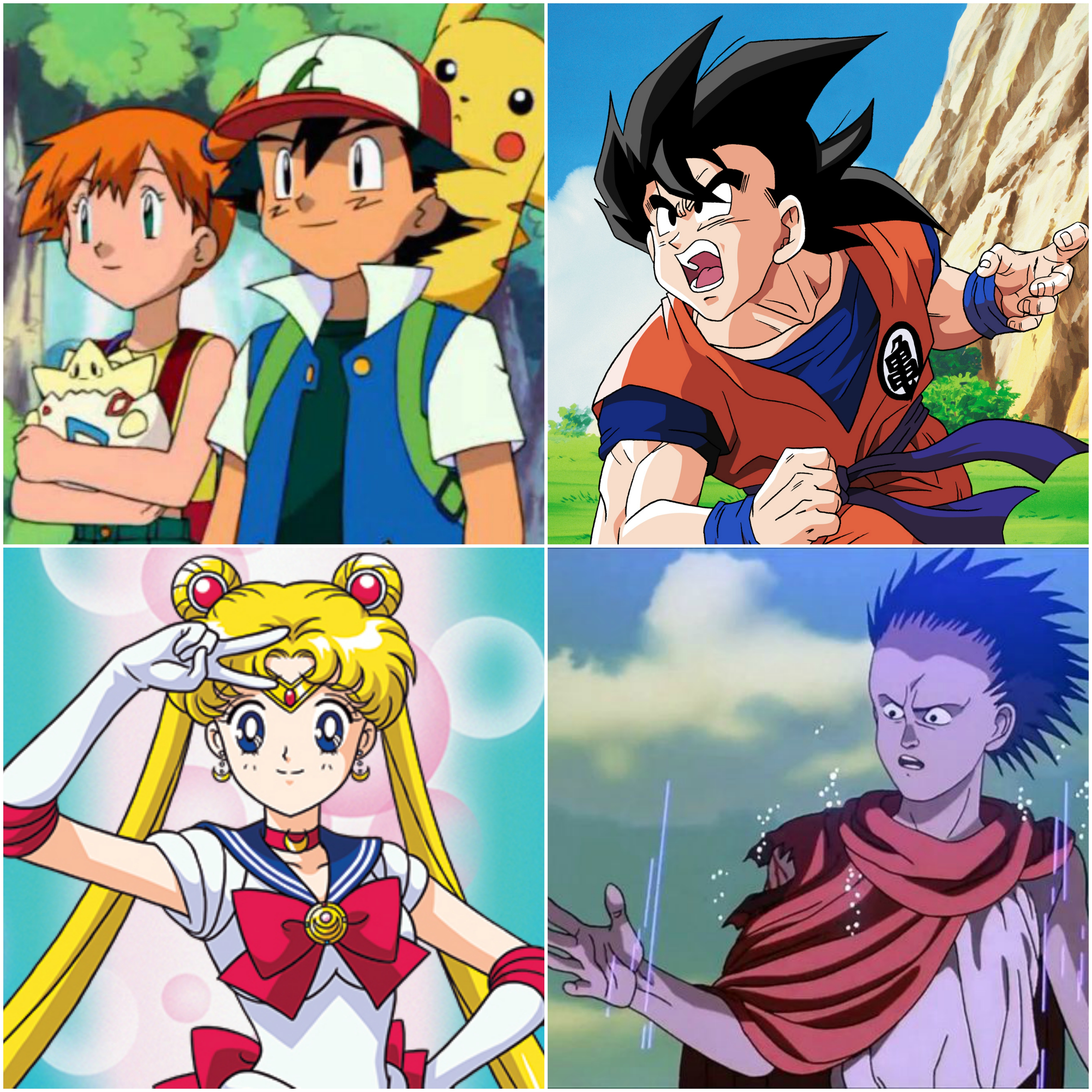
The 90s were big for Japanese influence, of which L5R was very a much part of
Legend of the Five Rings is a game known for the density of its lore, and it can sometimes be impossible to get out from under the 20+ years of history the game has built up. Furthermore, L5R has historically run into issues of very much being a product of its time, as popular geek culture of the late 1990s in the United States can be remembered as period where love and fascination with Japanese culture exploded. Anime suddenly became more accessible through Toonami and the early file-sharing software on the internet. The growth of the internet allowed for people with access to it to find others who shared in their passion.
For many, the celebration of Japanese culture through a distinctly Western and American lens became the root of their community, and L5R’s success as a brand and a game lies firmly within that moment. It has been 20 years since then, however, and popular culture has changed dramatically. L5R might have been created initially by white American men for white American men, but the current audience has become increasingly not white, not American, and not male.
The changes introduced into the modern version of L5R are subtle but indelible in their movement towards a Rokugan that is more diverse and closer to gender parity. Continuing the trend of the LCG, the opening fiction itself centers on the love story of Doji Hotaru and Bayushi (then Shosuro) Kachiko, two powerful women whose destinies are as inextricably entwined as their hearts, and just as filled with inescapable pain and conflict. The primer presented in these couple dozen pages pushes the game in a long-needed direction, starting with a love story between two bisexual women, including an 8th Fortune responsible for children and fertility, and a redefinition of the tenets of Bushido to reflect a more realistic view of a fantastic code of conduct. These elements are not there by accident. As the game shifts out of the primer and into the real meat of the game, it always remembers that first impression it gave, of a world filled with beauty and passion that is only made all the more poignant by the austerity which surrounds it.
The Gameplay
The rest of the book presents a mostly complete game system designed to simulate life in the Empire of Rokugan as one of the Great Clan samurai, the nobles who are sworn to serve the Emperor and protect and lead the peasants. As the inheritors of generations of traditions literally handed down by demigods, these Great Clans feud constantly among each other for resources, glory, and honor. Each Great Clan is effectively its own kingdom, complete with their own ruling families of nobles (and less ruling families of nobles), unique traditions, and unique takes on the code of Bushido, a set of values which dictate honorable conduct in society.
There are seven of these Great Clans, all of which serve the Emperor Hantei, a semi-divine head of state and religion whose ancestor united Rokugan under his rule a thousand years ago. Rokugan is presented as a vast canvas of experiences, a predominantly rural and agrarian empire with only a handful of great cities dotting the land, perfect for the Great Clans to battle over. There is a great deal of space in Rokugan to tell just about any story you might wish, be it a compelling narrative of warfare and honor, thrilling adventures of intrepid investigators, or the heart-wrenching tragedy of forbidden love. The content of the story can be anything, but the focus of Legend of the Five Rings RPG never shifts from its starting point: the inner lives of the characters.
At the core of the Legend of the Five Rings RPG is its Narrative Dice and Strife systems. In previous editions of L5R, players would construct a pool of d10s determined by a score in a Trait and a score in a Skill. They would roll these d10s, select a number of the dice to keep, and add the values on the kept dice together to compare to a Target Number. If the sum was equal to or greater than the Target Number, they succeeded; otherwise, they failed. Players could choose, before they rolled, to take Raises to increase that Target Number. If they succeeded at the modified, higher Target Number, they were able to do more with that success, often making their victory more powerful.
Fantasy Flight Games has adapted this system by making a hybrid of this old method and the more modern Narrative Dice system found in their Star Wars: Edge of Empire and Genesys Roleplaying systems. As before, players create a dice pool by adding a number of Ring dice (bespoke d6s) and a number of Skill dice (bespoke d12s), then roll. The player then chooses a number of the dice, regardless of type, to keep. The faces of these dice do not contain numbers, however, but contain a combination of four symbols: Success, Explosive Success, Opportunity, and Strife (with one caveat: both types of dice do have one face which is blank). By choosing what dice to keep, the player has more control after the roll of the dice to determine exactly how successful their character is at a task, but has less control over what those options are. Ideally, this creates a scenario where every roll of the dice should move the story forward by providing an optional value over the binary pass / fail. A player can choose to fail a check to while still providing assistance to another character or learning a key fact, for example.
The Struggle
The most notable thing about this system, however, is the inclusion of Strife icons on the dice faces. Strife in L5R RPG is meant to show emotional investment of a character in a course of action, a growing sense of turmoil that must be held back in order to appear polite. Strife is the human heart of the game, struggling against the outwardly unemotional, rigidly impersonal world which surrounds the characters.
On the dice, many of the positive icons are paired with a Strife icon, effectively attaching a cost to choosing that die as a Kept die. Strife accumulates over the course of play, building up until the character gains too much and becomes Compromised, a negative state where the character’s emotional and mental defenses are down. As such, Strife serves as a building pressure of the narrative, growing higher and higher as the story progresses, with limited ability for the characters to reduce it. This creates a Risk vs Reward dynamic radically different from prior incarnations of the game. In previous editions, players had to make calculated risks before the dice have been rolled, betting on the outcome to be sufficient. Here, it becomes much more of a war of attrition, constantly asking the player “How much does my character care about succeeding here?” The more that character cares, the more Strife they are willing to take on to achieve the task, but at the same time, the closer that character comes to becoming vulnerable.
In this, the Core Rules of the L5R RPG functions almost identical to what was shown in the Beta. It is the same matrix of Risk vs Reward, the same grind of Strife vs Composure that pushes characters towards the climax of Compromised status. It is in the inclusion of a single release valve on that pressure that marks a difference between the Beta and the finished game, and that difference changes the entire feel of the game. Central to the core of the Strife system is the idea of Duty vs Passion, made specific in the Giri (the sworn duty and obligation of society) and Ninjo (the human heart of emotion and compassion) that each character must have.
Giri has remained untouched, giving a character Strife when they neglect their sworn duty, while Ninjo has changed dramatically. While a character working directly counter to their Ninjo still gains Strife, a character who chooses to indulge in their Ninjo can reset their Strife to zero. Previously, the only way to lose Strife in the game was to either use Opportunities, wait to the end of the scene (and that only reduced it to half), or to become Compromised and subsequently Unmask, causing significant loss of face and dignity. By simply allowing the complete pursuit of Ninjo to reset a character’s Strife, players are now encouraged to find situations to focus around their Ninjo, which creates more dynamic storytelling but also adds incentive for contrasting it with their Giri. Giri and Ninjo are not strictly negative in a gameplay sense, and that paints the path to what allows the L5R RPG to be a beautiful game.
Beauty In Suffering
The new Legend of the Five Rings RPG works the best when the player buys into the experience of ruining their character’s emotional lives. It is a game which best encapsulates the moment where human beings, fallible and imperfect, indulge in their powerful passions while leashing them to an impossible ideal. The most fun to be had in this game is where you build a character who cannot just survive in society, who must push themselves towards an explosion of pain and passion, hope and despair, triumph and defeat – all at once. In many ways, this game is the most “anime” version of itself, and it wears its influences on its sleeve. And while FFG’s new version of the RPG is most certainly a pretty game, it’s its focus on making its characters human beings, complete in their limitations and failures, that lifts it above being just another self-indulgent fantasy action game about samurai. The L5R RPG is a game about failing beautifully, because there is simply nothing more human than that.
David Gordon is a contributor to the site. A storyteller by trade and avowed tabletop veteran, he is always on the lookout for creative tabletop games. He can be reached at dave@cardboardrepublic.com.
You can discuss this article and more on our social media!
Photo Credits: L5R images by Fantasy Flight Games

